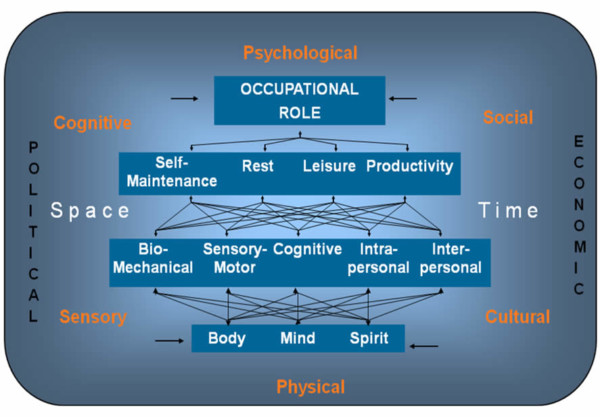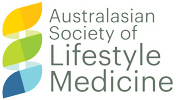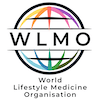
Occupational Therapy and Lifestyle Medicine – a match made in heaven
Does anyone really know what an OT does? It’s always the same response when you say to someone that you are an Occupational Therapist. That kind of vague confusion of what on earth is that! Unfortunately, it is an extremely undersold and undervalued profession that has taken a seat in the back stalls for a long time. This is unfortunate because OT’s really do have the knowledge, the philosophy, the empathy and the capacity to lead the way in health care and in particular, Lifestyle Medicine. Whether this actually happens or not is out of my hands, however, I must at least attempt to provide some awareness and insights into this misunderstood and forgotten profession. Why? Because Occupational Therapy and Lifestyle Medicine is quite simply a match made in heaven, and we can all benefit.
So what is Occupational Therapy? Where did this odd profession come from? What do OT’s actually do? And why is it a perfect match for Lifestyle Medicine?
What is OT?
Do we dare to ask it? Do we dare to mention the basket weavers?
Occupational Therapy emerged as a profession during the early 1900’s and solidified following WW1 where injured service men were prescribed ‘activities’ as a way of promoting both physical, cognitive and emotional rehabilitation. These activities were very often arts and crafts or woodwork type tasks. When you step back and look at the bigger picture, it was actually an ingenious intervention! When you analyse the task of making something, let’s just say crocheting a blanket, it takes an incredible amount of skill; physically, you need postural control to be able to sit, upper limb function, fine motor control and dexterity, adequate sensation, visual acuity; cognitively you need some planning skills, attention, memory, visual perceptual skills, problem solving and then a whole heap of internal self regulation skills such as motivation, awareness and some sort of connection to the task. As you are seeing the product being made, there is a sense of achievement, of progress, creating the internal volition to keep rehabilitating. Phew!! And that’s just for a bit of crocheting!
So, you can see the premise behind giving craft or activities as a means of therapy was actually quite insightful, and as the profession emerged, OT’s moved away from a purely medical model focus towards one that considered a complex combination of social, biological and economic causes for dysfunction. It challenged the purely scientific and physical model of disease and started to use an approach that was based on holism, that occupation is essential for health, and that the environment in which we do everything impacts enormously on us.
Unfortunately, instead of being seen and promoted as a profession that was ahead of the times, was beautifully holistic, functional and integrative in its approach to treating people, we kind of got stuck in the activities of basket weaving and woodwork. Someone in their infinite wisdom thought that during a 4-year university degree which covered anatomy, physiology, neuroanatomy, psychology and social sciences, that we should also turn a bit of wood and weave a few baskets. Yep that’s right; up until very recently, you would find OT students in the ‘labs’ learning woodwork and basket weaving! Mind boggling! No wonder the perception of this top-class profession got lost in the woods.
Now that we understand where the labels and stigmas come from, we can focus on looking at the real value of the profession. As noted, the underpinning philosophy and models of practice focus very heavily on the persons ‘occupational role’ and the factors, both internal and external, cause and effect, both function and dysfunction, as evidenced in the Occupational Performance Model diagram below1. Furthermore, “the primary goal of Occupational Therapy is to enable people to participate in the activities of everyday life… in the occupations they want to, need to, or are expected to do”2.
Being able to analyse a person and a person’s lifestyle to pinpoint areas of dysfunction or disharmony is one of the greatest skills of an OT.
What do OT’s actually do?
How does this actually look in the year 2018? Let’s take a look at one of my patients, Jodi, who sought help due to feeling chronically fatigued and increasing weight gain. Her main occupational roles are mother and HR manager. Both are essentially ‘full time’ roles, however, it is impossible for her to meaningfully fulfil both, without literally splitting herself in half. So, the process of assessing and treating Jodi was to identify what aspects of her lifestyle needed changing in order for her to meaningfully fulfil the roles that she wants to and needs to, and therefore, get to the cause of her fatigue and weight gain.
In Jodi’s case, the three most important lifestyle ‘causes’ that needed attention were as follows:
Social/cultural/economic beliefs and circumstances
Social/cultural/economic beliefs and circumstances that were influencing her decisions regarding working hours and childcare assistance. Discussions revealed her highest personal priority was that of mother, however, she felt a huge social and cultural pressure to continue longer hours of work despite the economics not being in her favour after childcare expenses etc. The outcome being a plan to reduce working hours, implement some creative and flexible work strategies that would achieve her desired outcomes and reduce childcare hours. Ongoing coaching and self reflection was paramount to the overall process of reshaping internal beliefs about her changing roles.
Rest schedule
Rest schedule required some changes to support longer duration and better-quality sleep. Her whole relaxation routine prior to bedtime required a shift from overstimulating screen time on social media to low lighted activities such as reading, journaling, bathing and even talking with her partner! (That thing that seems to be a forgotten art… conversation. Face to face, even a bit of eye contact… amazing!) Imagine what that alone does for the relaxation response in the body!
Self maintenance routines
Self maintenance routines, especially how to support a nourishing eating plan. Rather than just making recommendations for a healthier diet, we completed a thorough task analysis for meal planning and preparation. What was involved to actually do this beyond the obvious? This included, preparing a meal plan to match her working and family schedule, preparing a shopping list to match the meal plan, allotting time to shop, getting access to recipes, scheduling time to prepare and cook meals, the how and what of meals at work and on the run for her and her family, and, the task of getting her partner emotionally, mentally and physically on the same page as her with respect to their eating habits.
It really feels like this is not rocket science and is so simple, but the outcome for this woman was life changing. While her GP had identified mineral deficiencies and hormonal imbalances and prescribed a supplementation schedule, this treatment was only going to treat Jodi’s symptoms to a point. While she continued to live the same life, she would always end up back at the same spot of getting fatigued and gaining weight. Working with Jodi to make lifestyle changes in conjunction with addressing mineral deficiencies and hormonal imbalances, allowed a greater change and most importantly, a sustainable result.
Occupational Therapy and Lifestyle Medicine – a match made in heaven
Does anyone really know what an OT does? It’s always the same response when you say to someone that you are an Occupational Therapist. That kind of vague confusion of what on earth is that! Unfortunately, it is an extremely undersold and undervalued profession that has taken a seat in the back stalls for a long time. This is unfortunate because OT’s really do have the knowledge, the philosophy, the empathy and the capacity to lead the way in health care and in particular, Lifestyle Medicine. Whether this actually happens or not is out of my hands, however, I must at least attempt to provide some awareness and insights into this misunderstood and forgotten profession. Why? Because Occupational Therapy and Lifestyle Medicine is quite simply a match made in heaven, and we can all benefit.
So what is Occupational Therapy? Where did this odd profession come from? What do OT’s actually do? And why is it a perfect match for Lifestyle Medicine?
Why is OT a perfect match for Lifestyle Medicine?
In ‘Lifestyle Medicine’, we are talking about a medical movement towards treating the embedded cause in lifestyle. In ‘Occupational Therapy’, we are talking about a profession that is fundamentally based on treating occupation. Those things that are necessary, valued and meaningful to the individual and that occupy their time; i.e. lifestyle. As proposed by Dr Garry Egger, when looking at the drivers of modern disease, we must look at “the cause of the cause”3. Factors such as that of the micro and macro environment; physical/sociocultural/political/economic determinants. It’s a paradigm shift for the main stream western medical practitioner. However, for those trained in Occupational Therapy, this is the paradigm of thinking that is second nature to us.
I feel like OT’s finally have a language for the profession that got lost in basket weaving. Lifestyle Medicine is the arena for OT’s to step into and utilise their astute clinical skills to help people learn healthy ways of living. It will take some courage for the individuals in the profession to create new and innovate roles in practices and it will take some risk for those in practice to align and integrate OT’s into their teams. It is my belief though that this risk will be totally worth it for those wanting to truly stand up and make a difference in Lifestyle Medicine.
Jacqueline Edser is a qualified Occupational Therapist, Certified Lifestyle Medicine practitioner and offers Lifestyle Medicine Coaching.
More articles by Jacqueline:
- Occupational Performance Model (Australia). Draft of 2011 revision of the OPM(A). [Internet] 2014 [cited 2018 May 14]. Available from: http://www.occupationalperformance.com
- World Federation of Occupational Therapists (WFOT). Definition of Occupational Therapy. [Internet] 2016 [cited 2018 May 14]. Available from: http://www.wfot.org/AboutUs/AboutOccupationalTherapy/DefinitionofOccupationalTherapy.aspx
- Egger, G. (2017, September 15). Is obesity really the problem? A case for cleaning out the mineshaft as well as trying to resuscitate the canary (slide 27) [PowerPoint presentation]. Manly, NSW: Lifestyle Medicine Conference 2017.
This article has been written for the Australasian Society of Lifestyle Medicine (ASLM) by the documented original author. The views and opinions expressed in this article are solely those of the original author and do not necessarily represent the views and opinions of the ASLM or its Board.




